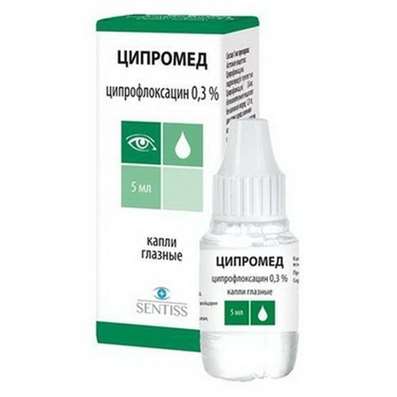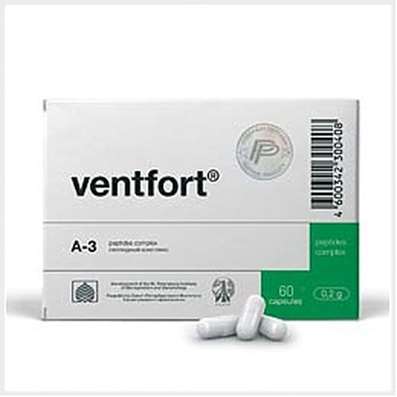Instruction for use: Phenibut
I want this, give me price
Trade name of the drug – Phenibut (Phenybutum)
Active substance: Aminophenylbutyric acid (Acidum aminophenylbutyricum)
Chemical rational name: γ-amino-β-phenylbutyric acid hydrochloride.
Dosage Form: tablet
Composition(per tablet):
active ingredient - Phenibutum 250 mg;
Excipients - lactose, potato starch, calcium stearate.
Description of Phenibut
The drug forms
Capsules: Hard gelatin size ¹0, white containing powder from white to white with a little shade.
Pharmacotherapeutic group:
Anxiolytic (tranquilizer), nootropics
ATX Code
N05BX Anxiolytics other
The nosological classification (ICD-10)
F40.2 Specific (isolated) phobias: Claustrophobia.
F41 Other anxiety disorders: anxiety Relief; Nonpsychotic anxiety disorders; An alarm condition;
Anxiety; Disturbingly suspicious condition; Chronic anxiety; Sense of anxiety.
F41.1 Generalized anxiety disorder: generalized anxiety; Generalized anxiety disorder; Panic reaction
anxiety disorder; phobic neurosis.
F48 Other neurotic disorders: Neurosis; Neurological diseases; Neurotic disorders; Neurotic state; Psychoneurosis; Anxious-neurotic state; Chronic neurotic disorders; Emotional reactive disorder.
F51.0 Insomnia inorganic etiology: Situational insomnia
F95 Tics: Children tics; Nervous tics in children.
F98.5 Stuttering [hesitation]: Stuttering; Stuttering and other speech defects in children; Clonic form of stuttering; logoneurosis.
G47 Sleep disorders: Insomnia; Insomnia, especially difficulty falling asleep; desynchronosis; Prolonged sleep disturbance; Difficulty falling asleep; Short-term and transient insomnia; Short-term and chronic sleep disorders; Short or shallow sleep; Violation of sleep; Disturbed sleep, especially in the phase of falling asleep; Infringements sleep; sleep disturbances; Neurotic sleep disturbance; Shallow superficial sleep; shallow sleep; Poor quality of sleep; Night awakening; sleep Pathology; Postsomnic violation; transient insomnia; Trouble falling asleep; Early awakening; Early morning awakening; Early awakening; sleep disorder; somnipathy; persistent insomnia; difficult to fall asleep; difficulty falling asleep; Difficulty falling asleep in children; persistent insomnia; Worsening sleep; Chronic insomnia; Frequent night and / or early morning awakening; Frequent nocturnal awakening and a sense of the depth of the non-sleep; Night waking.
H81.0 Ménière's Disease: Disease / Meniere's syndrome; Labyrinth dropsy; Meniere's disease; Meniere's syndrome; endolymphatic hydrops.
H81.9 Violation of vestibular function, unspecified: vestibular nystagmus; Ischemic disorders of hearing and balance; Cochle-vestibular disorder; Cochle-vestibular syndrome of vascular origin; Labyrinth, vestibular disorders; Labyrinth disorders; Violation of the microcirculation in the maze.
R53 Malaise and fatigue: asthenic disorders; asthenic conditions; asthenic phenomenon; asthenic syndrome; asthenic violation; asthenic conditions; asthenic phenomenon; Asthenia; Astheno-adynamic state subdepressive; Asthenovegetative symptoms; Asthenovegetative violation; Asthenic-depressive disorder; Asthenic-depressive state; Asthenoneurotic state; asthenovegetative symptoms;Asthenic-depressive disorder; Asthenic-depressive state; Asthenoneurotic disorder; Fast fatiguability; Influenza young workaholics; yuppie Flu; Diabetic asthenia; The depletion of the nervous system; Depletion of natural; Malaise; Nervous exhaustion with depression; Overall mental fatigue; General physical fatigue; general malaise; Pathological fatigue; Increased fatigue; Increased fatigue; Mental fatigue; Mental exhaustion; Mental fatigue; syndrome asthenovegetative; Chronic fatigue syndrome; Reduced total activity; Status increased fatigue; The states of fatigue; mental fatigue; Prostration; Fatigue; fatiguability; Physical fatigue; Physical and mental fatigue; Physical fatigue; Functional asthenic conditions; Chronic fatigue; Chronic astenic state.
T75.3 Motion sickness when moving: air Sickness; motion Sickness; seasickness; Airsickness; kinetoses; Seasickness; The symptom of motion sickness; motion sickness syndrome; kinesia.
Z100 * CLASS XXII Surgical practice
Pharmacological Properties of PhenibutPharmachologic effect
Mode of action - nootropic, tranquilizer.
Phenibut is a phenyl derivative of GABA and phenylethylamine. It has anxiolytic effects, reduce stress, anxiety, fear, and improve sleep; It extends and enhances the effects of sleeping pills, narcotic drugs and neuroleptic drugs.
Pharmacodynamics
Phenibut - nootropic agent facilitates GABA-mediated neurotransmission in the central nervous system (direct effects on the GABA-ergic receptors). Also it has a tranquilizing, psychostimulant, antiplatelet and antioxidant effects.
It improves the functional state of the brain due to the normalization of tissue metabolism and effects on cerebral blood flow (increases the volume and the linear velocity of cerebral blood flow, reduces cerebral vascular resistance, improves microcirculation, has antiplatelet effect). It helps reduce or disappearance of feelings of anxiety, tension, anxiety and fear, normalizes sleep, has an anticonvulsant effect.
No effect on choline and adrenergic receptors. It extends the latent period and shortens the duration and severity of nystagmus. Reduces the symptoms of fatigue and vasovegetative symptoms (including headache, a feeling of heaviness in the head, sleep disturbances, irritability, emotional lability), enhances mental performance.
It improves mental performance (attention, memory, speed and accuracy of sensory-motor reactions). In exchange reception improves physical and mental performance, improves memory, normalizes sleep; It improves the condition of patients with movement and speech disorders.
Patients asthenia from the first days of therapy improves mood, increases the interest and initiative (motivation activities) without sedation or excitation.
In the elderly does not cause depression of the central nervous system, muscle-relaxing-effect often absent.
It improves the microcirculation in the eye tissues, reduces the inhibitory effect of ethanol on the central nervous system. The drug has low toxicity, it does not cause allergic effects, as well as teratogenic, embryotoxic and carcinogenic effects.
Pharmacokinetics
Absorption of high drug penetrates well in all body tissues and the blood brain barrier (BBB). In about 0.1% of brain tissue enters the administered dose of the drug, with the young and the elderly to a greater extent. Evenly distributed in the liver and kidneys. It is metabolized in the liver -80-95%, the pharmacologically inactive metabolites. Do not cumulated. After 3 chasa kidney begins to stand out, with the concentration in brain tissue and does not exhibit reduced in the brain for a further 6 hours. Approximately 5% is excreted by the kidneys unchanged, partly in the bile.
Indications for Phenibut
Asthenic and anxious-neurotic states, worry, anxiety, fear; in children with stuttering and tics; in the elderly - insomnia; for the prevention of anxiety disorders that arise before surgery and painful diagnostic studies. In the complex treatment of alcoholism and for the relief of psychopathological disorders in somatovegetativnyh withdrawal syndrome. In combination with detoxication preparation means it can be used to treat predelirioznyh states in alcoholism.
Meniere's disease, vertigo associated with dysfunction of the vestibular apparatus of various origins; for the prevention of motion sickness when kinetoses.
Contraindications for Phenibut
Individual intolerance, pregnancy (1 trimester), breastfeeding, children under 2 years.
The caution in patients with erosive and ulcerative lesions of the gastrointestinal tract, liver failure.
Phenibut Dosage and Administration
Inside after eating 2-3-week course. Adults: 250-500 mg 3 times a day. If necessary, after the daily dose increased up to 2500 mg. Children from 2 to 8 years - 50-100 mg; 8 to 14 - 250 mg 3 times a day. The single maximum dose in adults is 750 mg in patients over age 60 -500 mg, for children up to 8 years - 150 mg, from 8 to 14 years - 250 mg.
For treatment of alcohol withdrawal syndrome are administered in the first few days of treatment day by 250-500 mg 3 times daily and at bedtime to 750 mg, with a gradual decrease in the daily dose to normal adult.
For the treatment of vertigo with vestibular dysfunction and Meniere's disease appoint 250 mg 3 times daily for 14 days.
To prevent motion sickness take a dose of 250-500 mg once daily for 1 hour before starting pitching, or at the first light of seasickness symptoms. Antiseasick action Phenibut tablets increases with increasing dose. When the express manifestation of motion sickness (vomiting, etc.) pills inside Phenibut ineffective even at doses of 750-1000 mg.
Side effect of Phenibut
Drowsiness, nausea. Increased irritability, agitation, anxiety, dizziness, headache (with the first receptions), allergic reactions (rash, pruritus).
Overdose of Phenibut
Increased symptoms of side effects: severe drowsiness, nausea, vomiting, fatty liver degeneration (receiving more than 7 g), eosinophilia, decreased blood pressure, renal function. First aid - gastric lavage, activated charcoal and symptomatic therapy.
Interaction
With a view to mutual potentiation of drug Phenibut can be combined with other psychotropic drugs, reducing the dose of the drug Phenibut and match them with drugs. It extends and enhances the effects of sleeping pills, narcotic, antipsychotic and anticonvulsant drugs, and alcohol. There is evidence of increased under the influence of anti-Parkinsonian drug Phenibut action means.
It enhances the effect of anxiolytics, antipsychotics, hypnotics, narcotics and anticonvulsants.
It should not be combined with alcohol intake.
SPECIAL INSTRUCTIONS for Phenibut
With prolonged use is necessary to monitor the morphological composition of the blood (eosinophilia may develop while taking the drug at high doses); control of liver function.Use caution when operating machinery.
Release Form
Tablets of 250 mg. 10 tablets in blisters. Blisters to 1; 2; 3; 4; 5 together with instructions for use placed in a pile of cardboard.
Storage conditions of Phenibut
In a dry, dark place at a temperature no higher than 25 ° C.
Keep out of the reach of children.
Shelf life
3 years.
Do not use beyond the expiration date printed on the package.
Conditions of supply of pharmacies
On prescription.

 Cart
Cart





